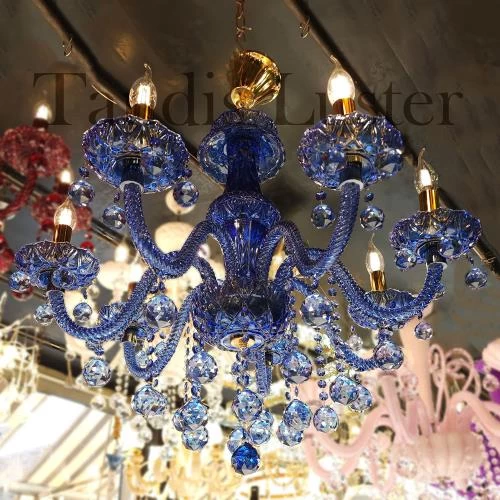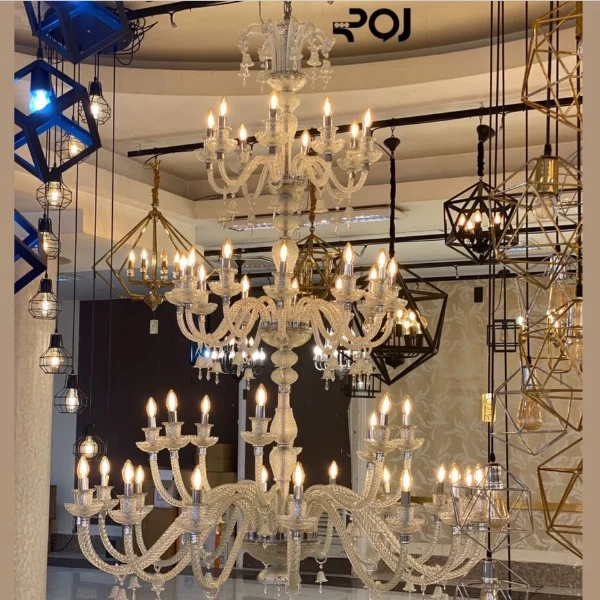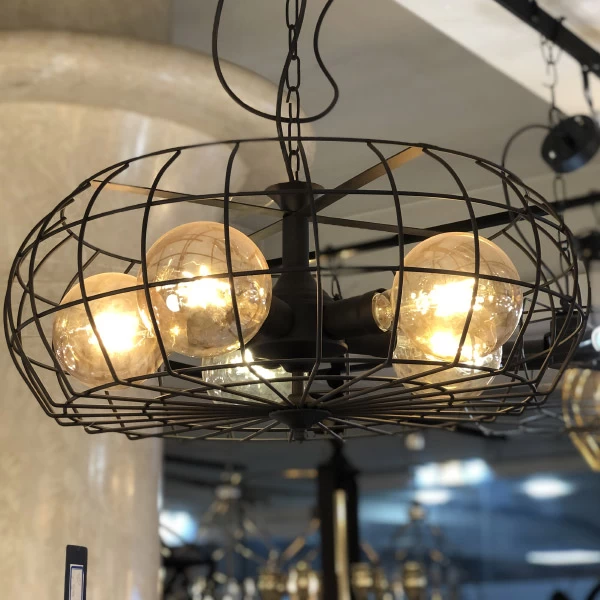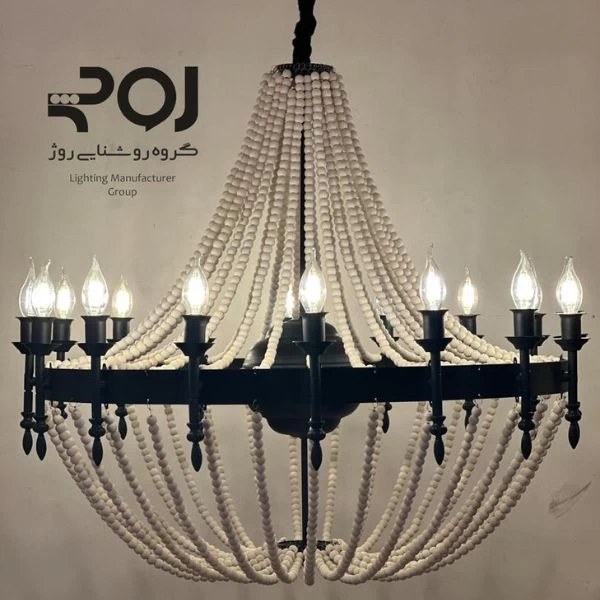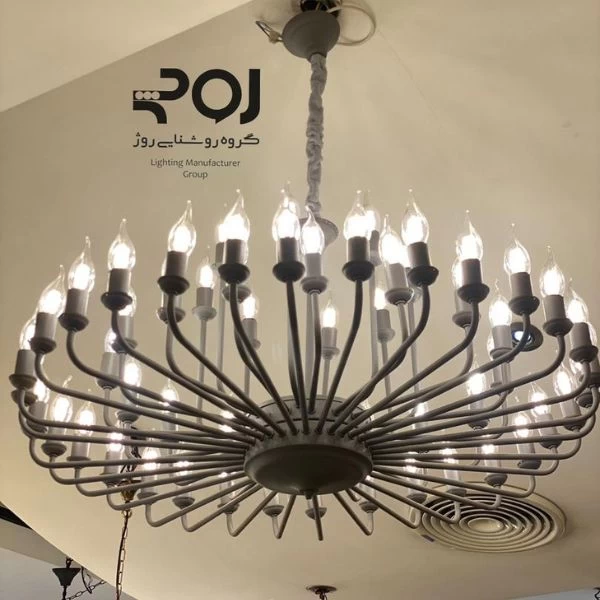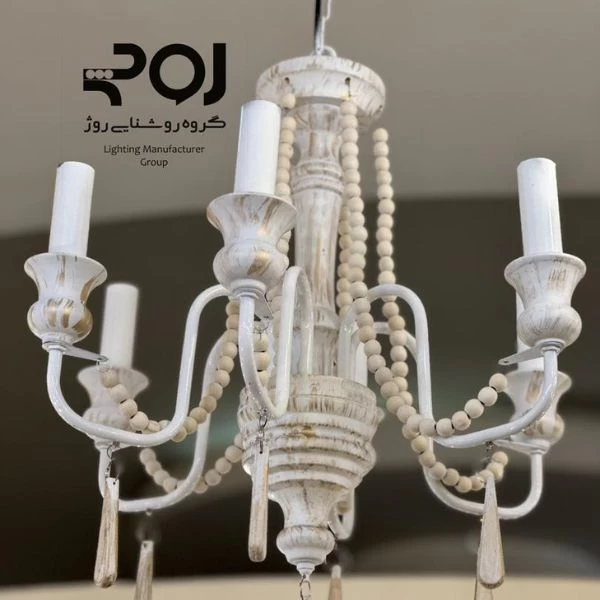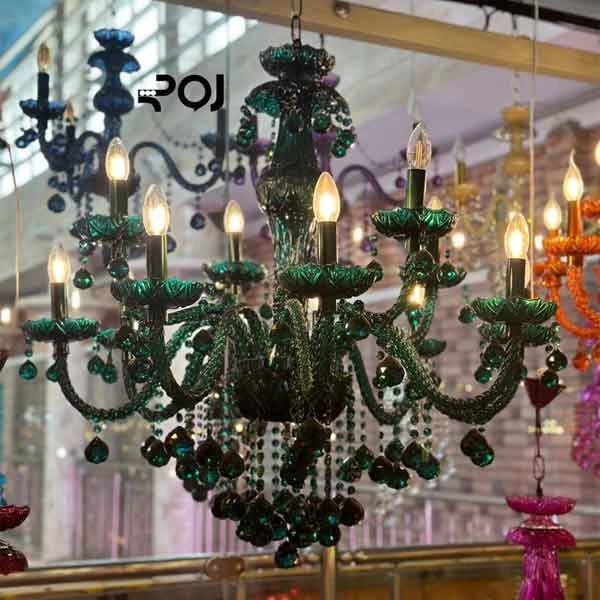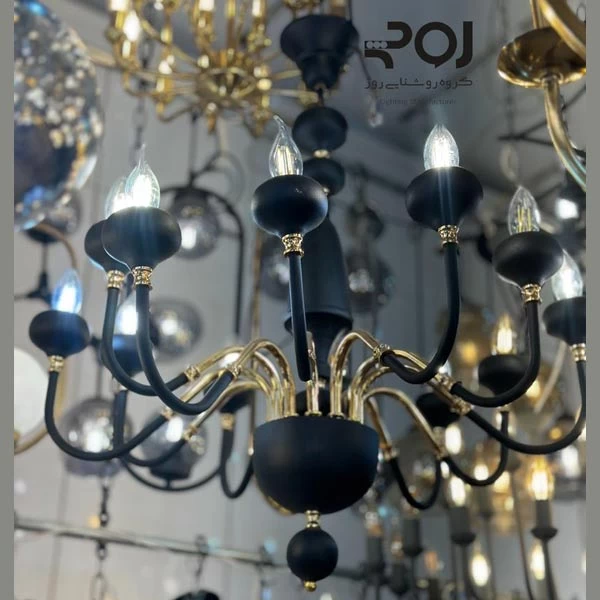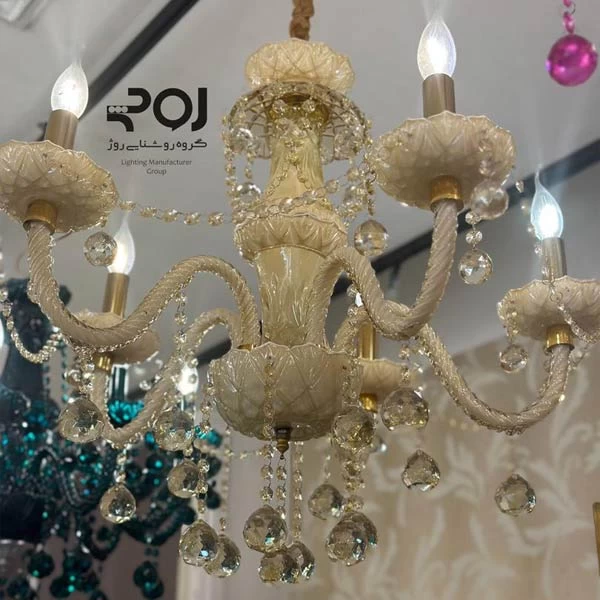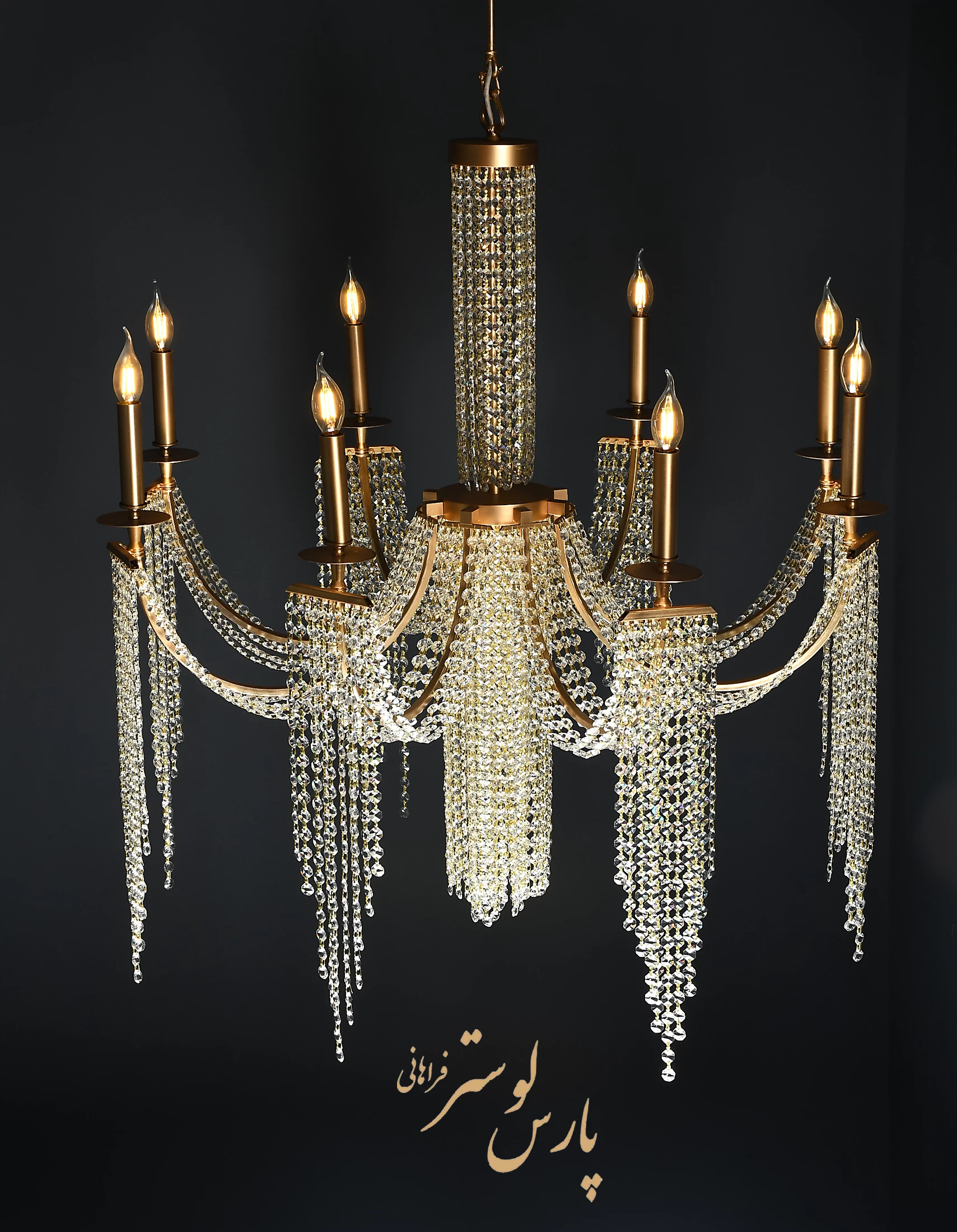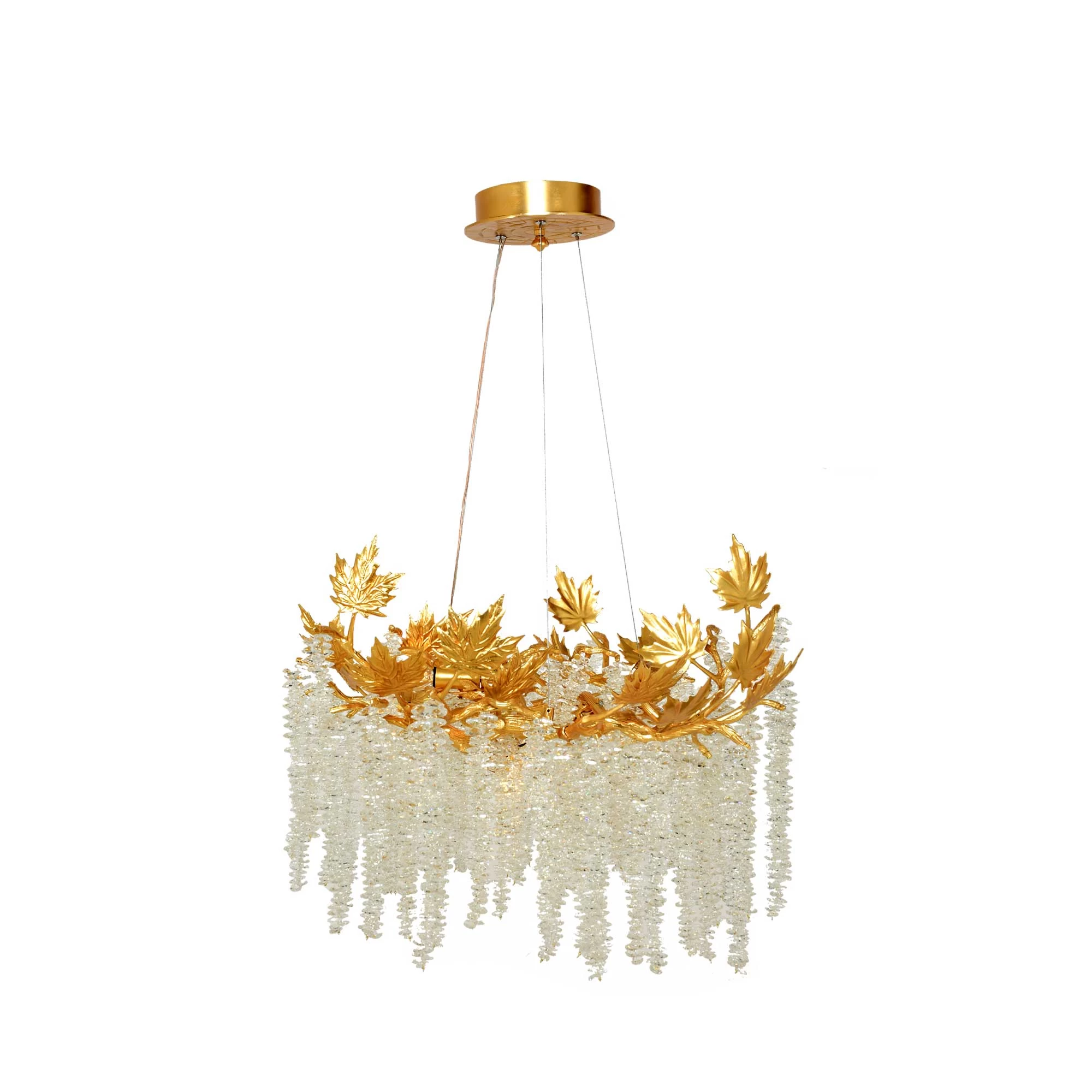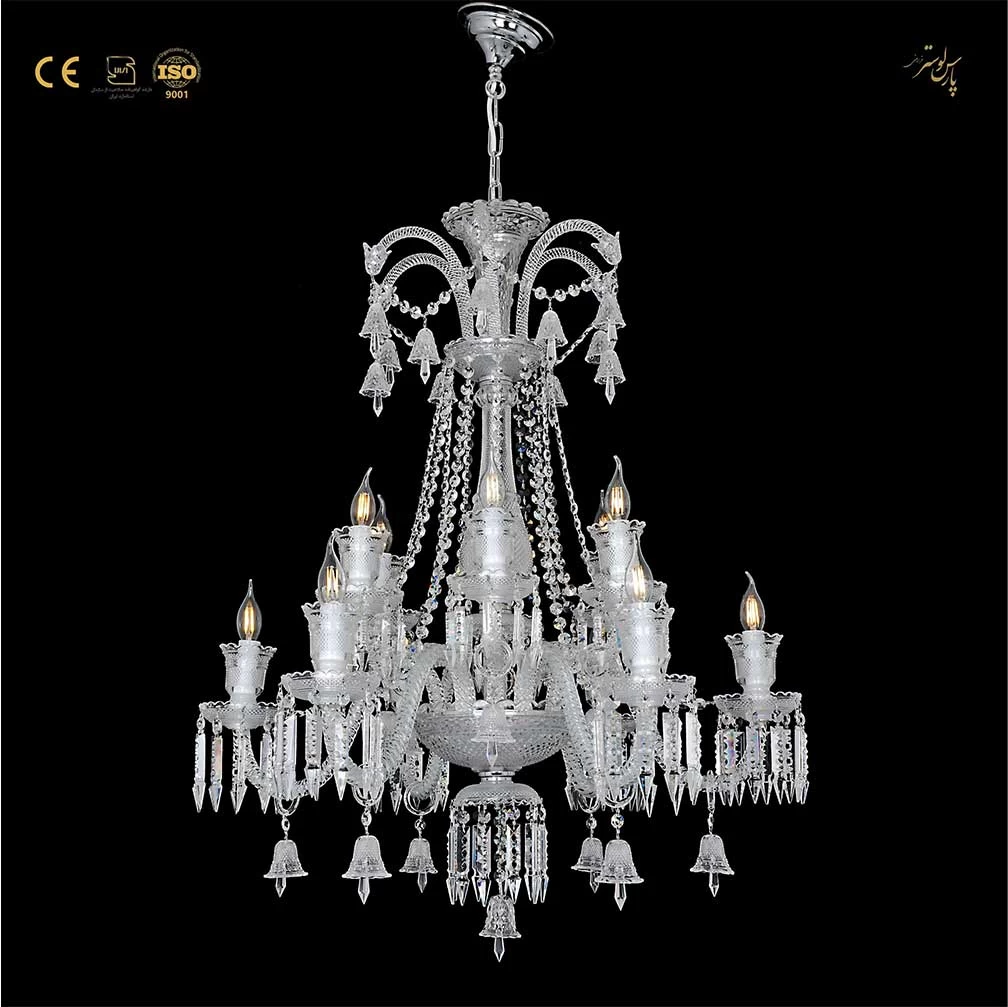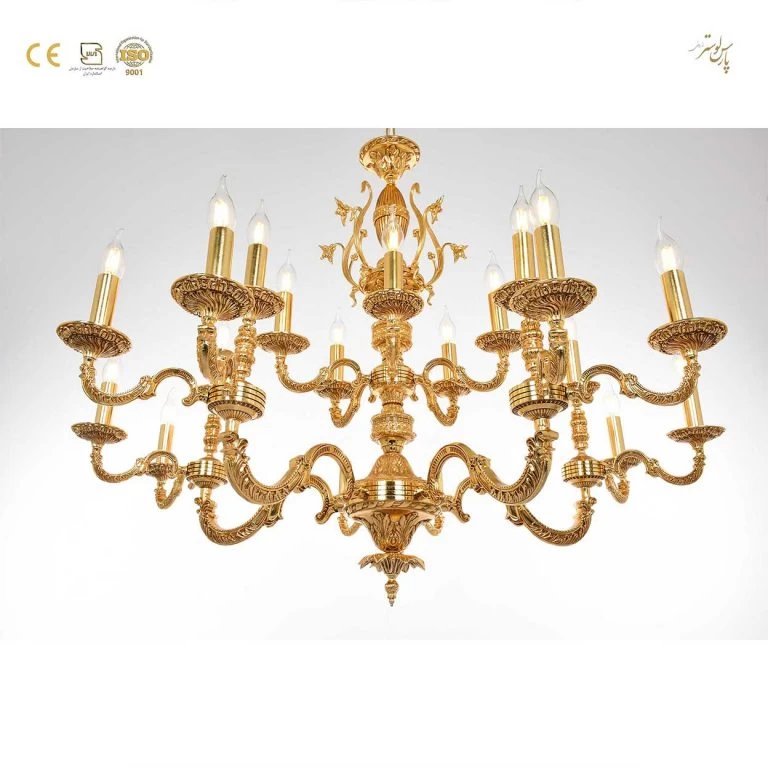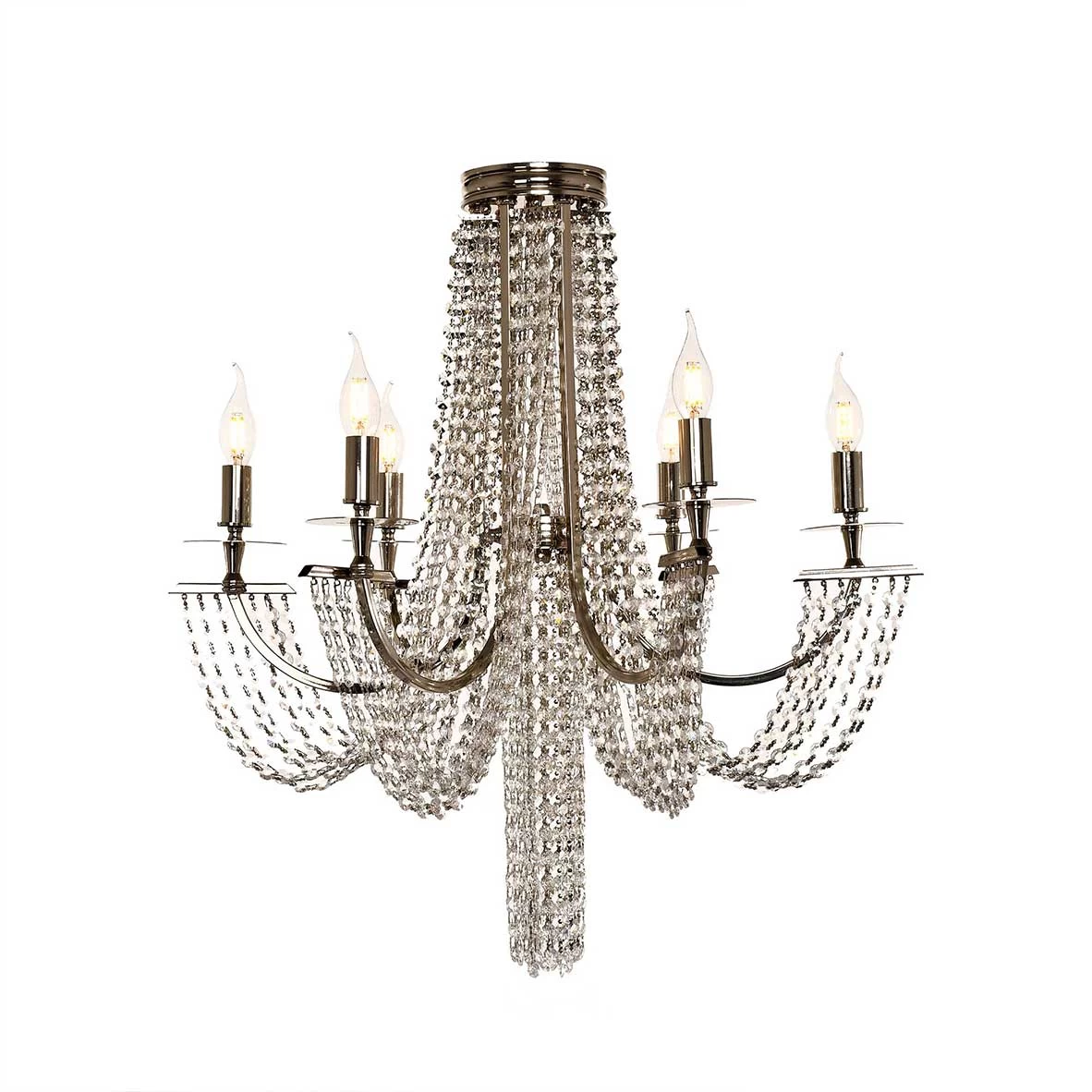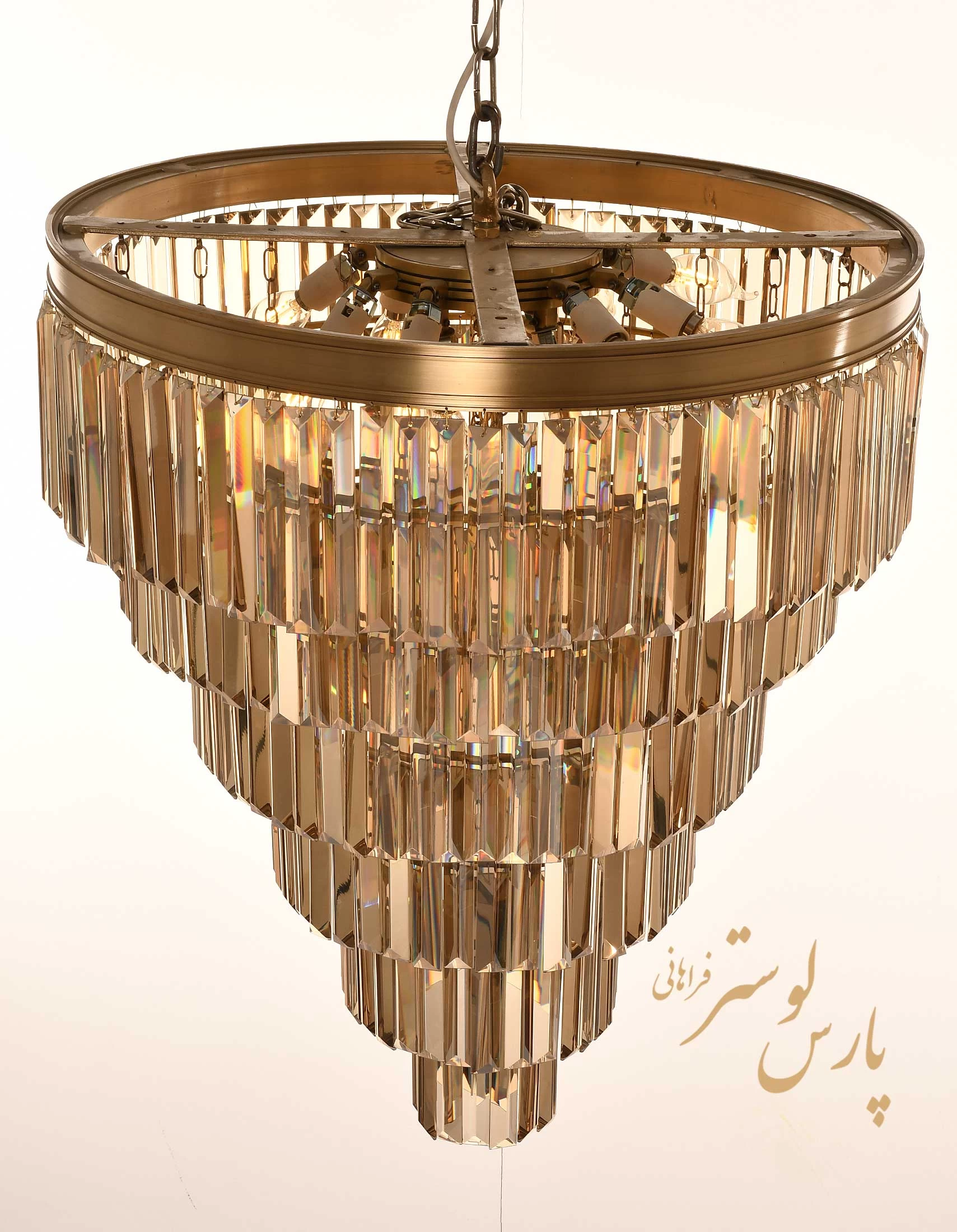chandelier
Chandeliers are decorative light fixtures that hang from the ceiling and typically feature multiple arms or tiers to hold candles or electric lights.
They have been a staple of interior design for centuries, with origins dating back to the Middle Ages when they were used to light large halls and churches.
Some key facts about chandeliers:
- Design and Materials: Chandeliers come in a wide variety of styles, from ornate and elaborate to clean and modern. Common materials include crystal, glass, wrought iron, bronze, and brass.
- Purpose: Chandeliers serve both a practical and aesthetic function, providing overhead lighting while also acting as a focal point and statement piece in a room.
- History: Early chandeliers were made to hold candles, but the invention of electricity in the 19th century allowed for more complex and electric-powered designs. Chandeliers have remained popular in stately homes, formal dining rooms, entryways, and other grand spaces.
- Sizes: Chandeliers range greatly in size, from small models suitable for intimate spaces to grand, multi-tiered versions for large halls and foyers.
- Care and Maintenance: Chandeliers require regular dusting and cleaning to maintain their luster. Larger, more elaborate models may need professional cleaning and servicing over time.
Overall, chandeliers continue to be a classic and versatile lighting option that can transform the look and atmosphere of a room. Their elegant and eye-catching designs make them a sought-after element of interior design.
The placement and size of a chandelier can have a significant impact on the surrounding furniture in a room.
Here are some of the key ways a chandelier can influence other furniture:
1. Scale and Proportion:
- The size of the chandelier needs to be proportional to the size of the room and the furniture pieces. An overly large chandelier can overwhelm a space, while a too-small one may look out of place.
- The height at which the chandelier is hung is also important, as it needs to be high enough to avoid obstructing views or causing a cramped feeling, but low enough to provide adequate lighting.
2. Furniture Arrangement:
- The location of the chandelier will often dictate the optimal placement of other furniture, such as dining tables, seating areas, and side tables.
- Arranging furniture in relation to the chandelier can help create a cohesive, balanced look in the room.
3. Lighting and Ambiance:
- The type and brightness of the chandelier's lighting can affect the overall ambiance and mood of the space.
- Brighter chandeliers may require furniture pieces that are more formal or traditional in style, while dimmer, more atmospheric chandeliers may complement more casual, modern furnishings.
4. Visual Harmony:
- The style, finish, and ornamentation of the chandelier should complement the aesthetic of the other furniture in the room.
- For example, an ornate, crystal chandelier may clash with minimalist, contemporary furniture, while a sleek, modern chandelier could enhance the look of mid-century modern pieces.
5. Functionality:
- Placement of the chandelier must consider the functionality of the furniture, ensuring there is enough clearance for people to move around and access the furniture comfortably.
By carefully considering the relationship between the chandelier and the surrounding furniture, designers can create a cohesive and visually appealing interior design that enhances the overall look and feel of the space.
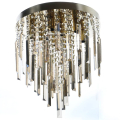
some helpful tips for selecting a chandelier that complements the existing furniture in a room:
1. Consider the room's overall style and aesthetic:
- Evaluate the existing furniture, decor, and architectural elements to determine the dominant style - whether it's traditional, modern, rustic, etc.
- Choose a chandelier that aligns with and enhances this established style.
2. Match the scale and proportions:
- Measure the room dimensions and ceiling height to select a chandelier that is appropriately sized.
- The chandelier should be large enough to make a statement, but not so large that it overwhelms the space.
- As a general rule, the chandelier's width should be about 1/2 to 2/3 the width of the table or seating area below it.
3. Coordinate the finishes:
- Look for a chandelier with a finish that complements the metals, woods, or other materials used in the existing furniture.
- For example, a brass or bronze chandelier would pair well with warm wood tones, while a brushed nickel or chrome chandelier could work with cooler, more contemporary furniture.
4. Reflect the level of ornamentation:
- If the existing furniture has clean, minimalist lines, choose a chandelier with a simpler, more streamlined design.
- For rooms with more ornate or traditional furniture, an elaborate, decorative chandelier can enhance the overall aesthetic.
5. Consider the lighting effect:
- Determine if you want the chandelier to provide bright, overhead lighting or a more ambient, soft glow.
- Choose a chandelier with the appropriate number and type of bulbs to achieve the desired lighting effect.
6. Leave room for functionality:
- Make sure the chandelier is hung at the right height to avoid obstructing views or interfering with the use of furniture below it.
- Ensure there is adequate clearance for people to move around the space comfortably.
By carefully considering these factors, you can select a chandelier that seamlessly integrates with and complements the existing furniture in the room, creating a cohesive and visually appealing design.
there are several chandelier styles that would complement a rustic, farmhouse-inspired living room:
1. Farmhouse/Rustic Chandeliers:
- These chandeliers often feature distressed, weathered, or reclaimed wood elements, such as exposed beams or wagon wheel designs.
- They may also incorporate wrought iron, copper, or other raw, industrial materials.
- Examples include wagon wheel chandeliers, wooden beam/timber chandeliers, and rustic wrought iron designs.
2. Candle-Style Chandeliers:
- Chandeliers with a candle-like aesthetic, often with exposed light bulbs or candle-shaped fixtures, complement the warm, cozy ambiance of a farmhouse-style space.
- These can range from simple, minimalist designs to more ornate, vintage-inspired options.
3. Globe or Cage Chandeliers:
- Chandeliers with globe or cage-shaped shades evoke a vintage, industrial feel that pairs well with rustic furnishings.
- Glass globe chandeliers and metal cage chandeliers are both excellent choices.
4. Antler or Wildlife-Inspired Chandeliers:
- For a more rustic, nature-inspired look, chandeliers featuring antlers, deer, or other wildlife motifs can be a striking choice.
5. Beaded or Wooden Bead Chandeliers:
- Chandeliers with wooden bead or rope accents add warmth and texture to a farmhouse-style space.
6. Lantern-Style Chandeliers:
- Chandeliers with a lantern-like silhouette, whether made of metal, wood, or a combination, can enhance the cozy, vintage-inspired feel of a rustic living room.
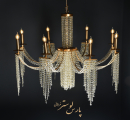
When selecting a chandelier for a rustic, farmhouse-inspired living room, look for pieces that incorporate natural, distressed, or industrial materials and elements that complement the overall aesthetic of the space.
- The size of the chandelier needs to be proportional to the size of the room and the furniture pieces. An overly large chandelier can overwhelm a space, while a too-small one may look out of place.
- The height at which the chandelier is hung is also important, as it needs to be high enough to avoid obstructing views or causing a cramped feeling, but low enough to provide adequate lighting.
- The location of the chandelier will often dictate the optimal placement of other furniture, such as dining tables, seating areas, and side tables.
- Arranging furniture in relation to the chandelier can help create a cohesive, balanced look in the room.
- The type and brightness of the chandelier's lighting can affect the overall ambiance and mood of the space.
- Brighter chandeliers may require furniture pieces that are more formal or traditional in style, while dimmer, more atmospheric chandeliers may complement more casual, modern furnishings.
- The style, finish, and ornamentation of the chandelier should complement the aesthetic of the other furniture in the room.
- For example, an ornate, crystal chandelier may clash with minimalist, contemporary furniture, while a sleek, modern chandelier could enhance the look of mid-century modern pieces.
- Placement of the chandelier must consider the functionality of the furniture, ensuring there is enough clearance for people to move around and access the furniture comfortably.

- Evaluate the existing furniture, decor, and architectural elements to determine the dominant style - whether it's traditional, modern, rustic, etc.
- Choose a chandelier that aligns with and enhances this established style.
- Measure the room dimensions and ceiling height to select a chandelier that is appropriately sized.
- The chandelier should be large enough to make a statement, but not so large that it overwhelms the space.
- As a general rule, the chandelier's width should be about 1/2 to 2/3 the width of the table or seating area below it.
- Look for a chandelier with a finish that complements the metals, woods, or other materials used in the existing furniture.
- For example, a brass or bronze chandelier would pair well with warm wood tones, while a brushed nickel or chrome chandelier could work with cooler, more contemporary furniture.
- If the existing furniture has clean, minimalist lines, choose a chandelier with a simpler, more streamlined design.
- For rooms with more ornate or traditional furniture, an elaborate, decorative chandelier can enhance the overall aesthetic.
- Determine if you want the chandelier to provide bright, overhead lighting or a more ambient, soft glow.
- Choose a chandelier with the appropriate number and type of bulbs to achieve the desired lighting effect.
- Make sure the chandelier is hung at the right height to avoid obstructing views or interfering with the use of furniture below it.
- Ensure there is adequate clearance for people to move around the space comfortably.
- These chandeliers often feature distressed, weathered, or reclaimed wood elements, such as exposed beams or wagon wheel designs.
- They may also incorporate wrought iron, copper, or other raw, industrial materials.
- Examples include wagon wheel chandeliers, wooden beam/timber chandeliers, and rustic wrought iron designs.
- Chandeliers with a candle-like aesthetic, often with exposed light bulbs or candle-shaped fixtures, complement the warm, cozy ambiance of a farmhouse-style space.
- These can range from simple, minimalist designs to more ornate, vintage-inspired options.
- Chandeliers with globe or cage-shaped shades evoke a vintage, industrial feel that pairs well with rustic furnishings.
- Glass globe chandeliers and metal cage chandeliers are both excellent choices.
- For a more rustic, nature-inspired look, chandeliers featuring antlers, deer, or other wildlife motifs can be a striking choice.
- Chandeliers with wooden bead or rope accents add warmth and texture to a farmhouse-style space.
- Chandeliers with a lantern-like silhouette, whether made of metal, wood, or a combination, can enhance the cozy, vintage-inspired feel of a rustic living room.

FAQs
What is the history of chandeliers?
Chandeliers have been used for centuries, dating back to the Middle Ages, when they were simple candle-holders. - Over time, chandeliers evolved into ornate, multi-armed lighting fixtures, becoming symbols of wealth and status.
How do I choose the right size chandelier for my space?
The general rule is to select a chandelier that is 1/2 to 2/3 the width of the table or seating area below it. - Measure the room dimensions and consider the ceiling height to ensure the chandelier is proportionally sized.
What chandelier styles work best in modern homes?
Clean, minimalist designs with sleek lines and materials like metal, glass, or crystal work well in contemporary spaces. - Geometric, angular, or asymmetrical chandeliers can also complement modern aesthetics.
How can I incorporate a chandelier into a rustic or farmhouse-inspired room?
Look for chandeliers with natural, distressed, or industrial elements like wood, wrought iron, or exposed bulbs. - Candle-style, globe, or lantern-inspired chandeliers can also enhance a cozy, farmhouse-inspired ambiance.
 +7929688-88-14
+7929688-88-14

 English
English
 Persian
Persian
 Russian
Russian
 Chinese
Chinese


 +7929688-88-14
+7929688-88-14

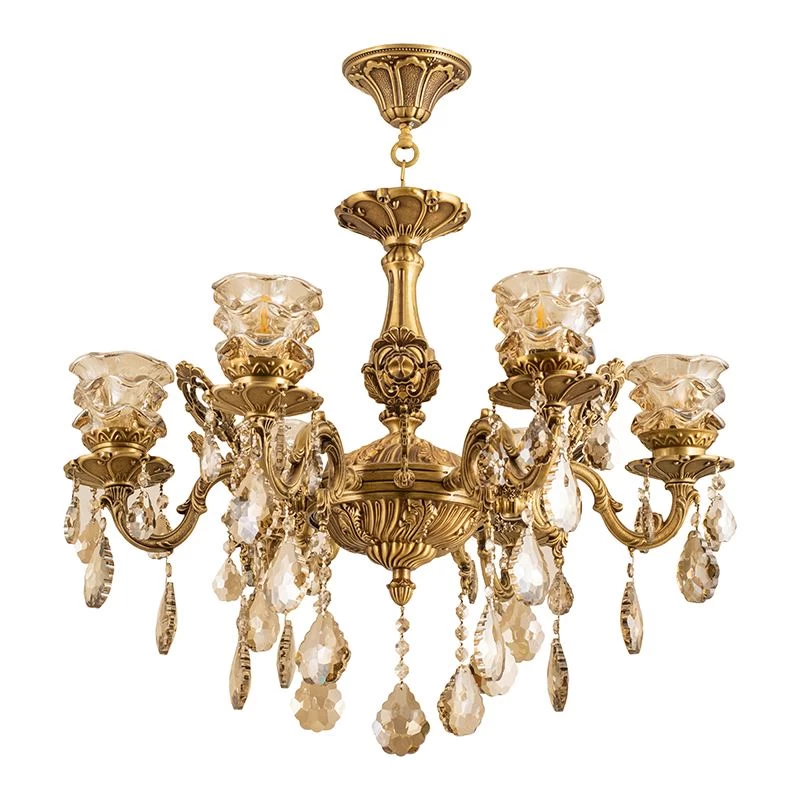

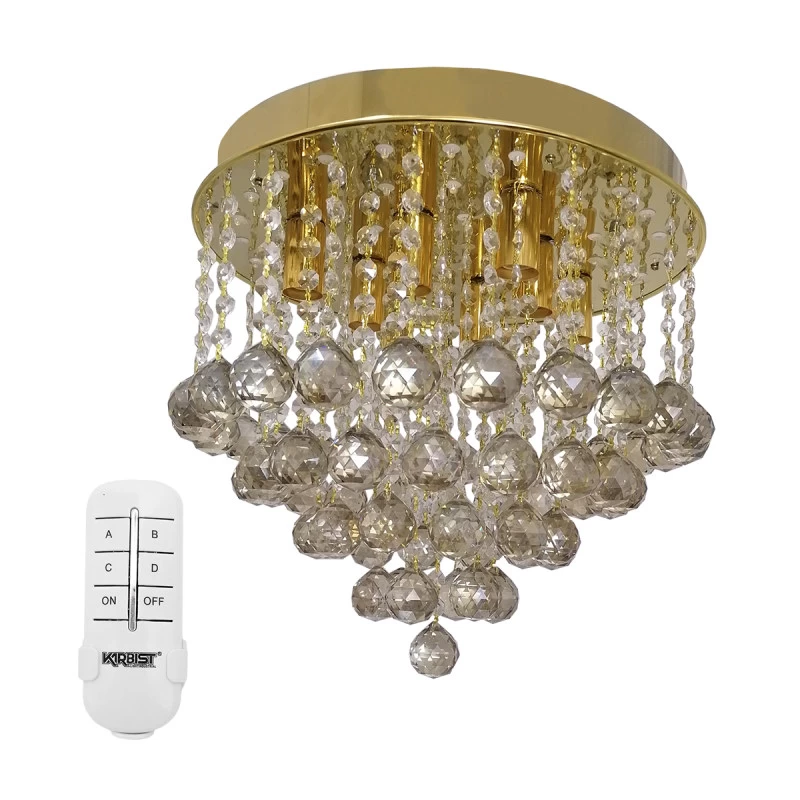
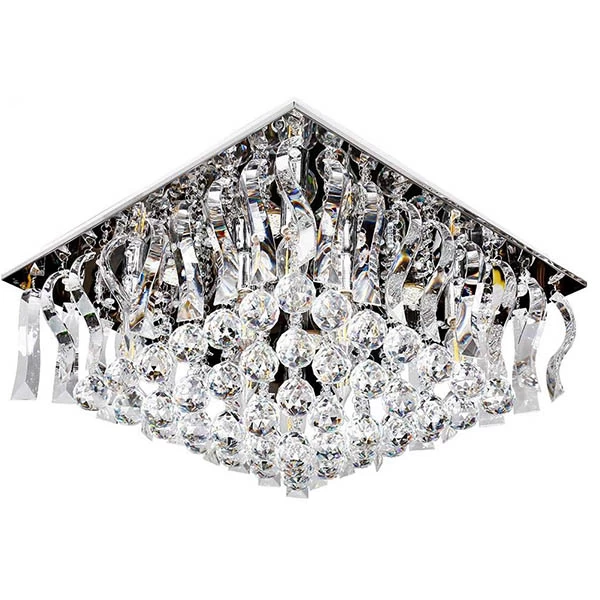

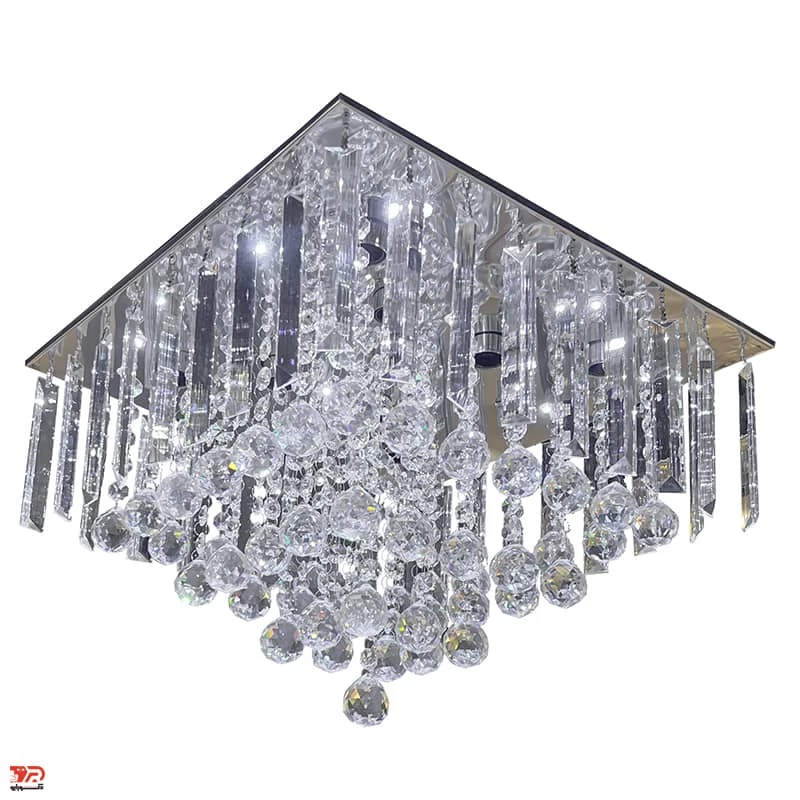
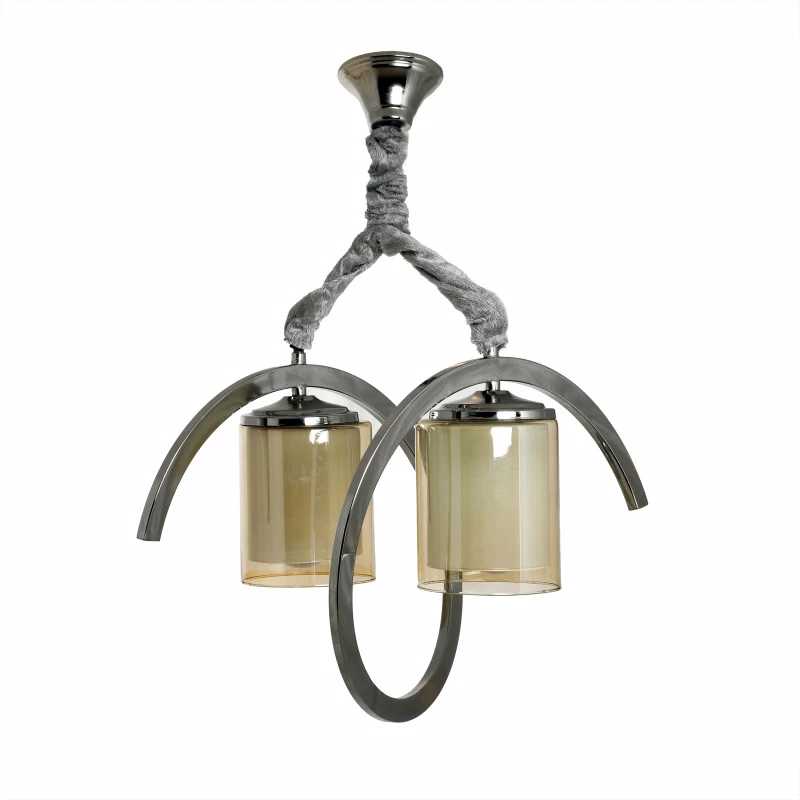
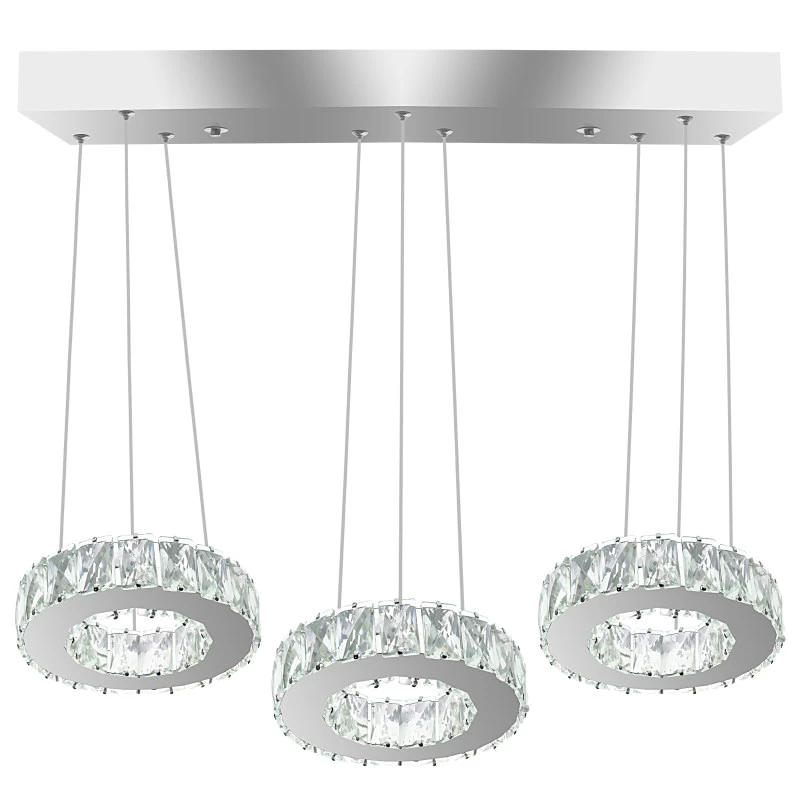
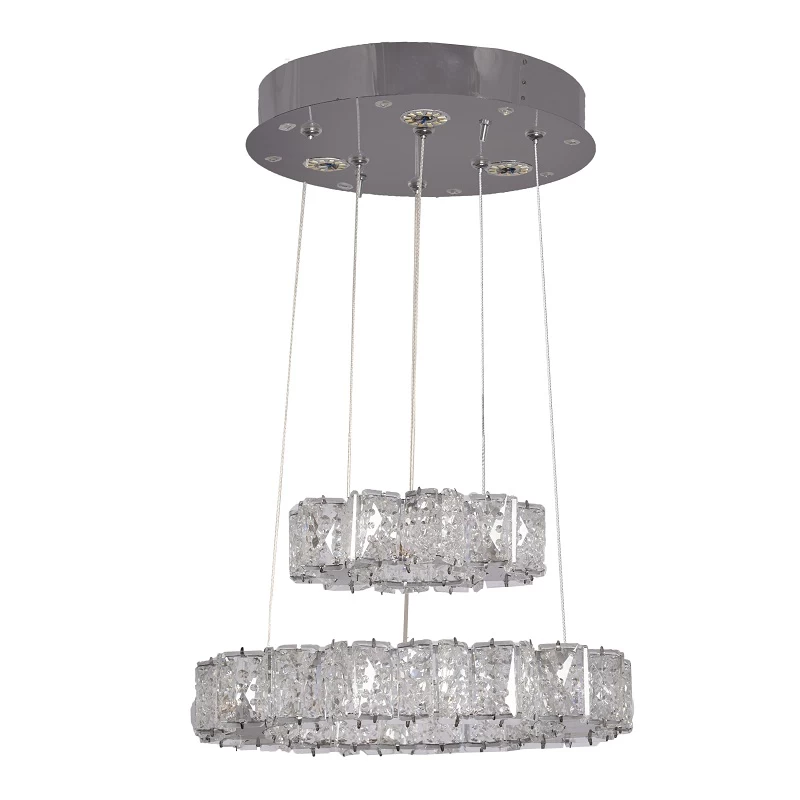
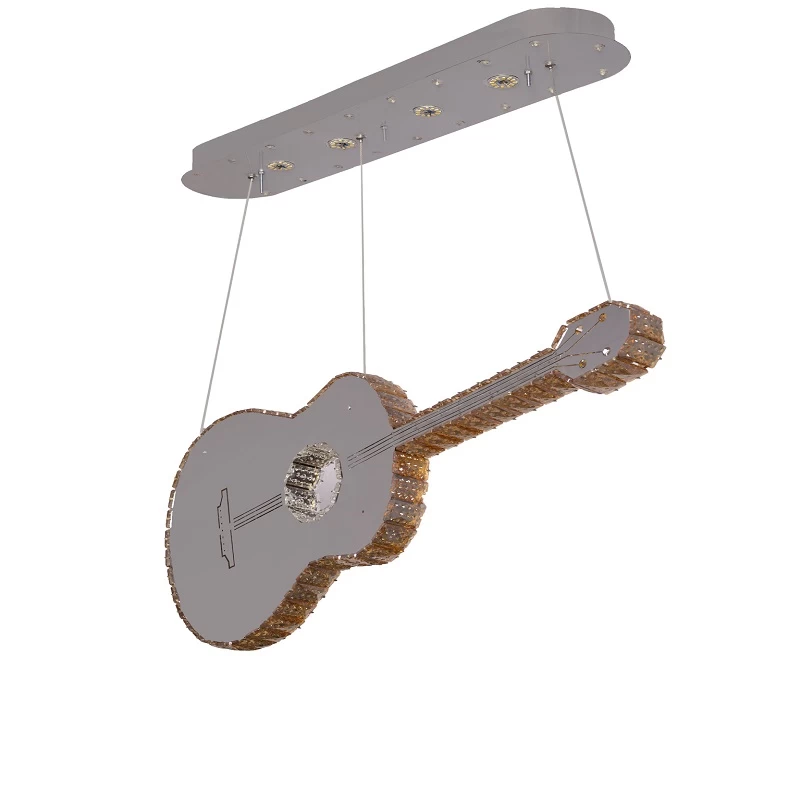
.webp)
.webp)
.webp)
.webp)
.webp)
.webp)
.webp)
